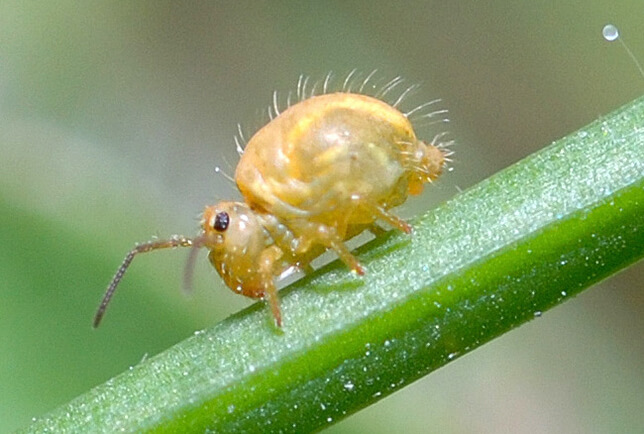What Do Springtails Look Like?

In New England, most springtails are purple, dark gray, or black in color and slightly smaller than a grain of rice. These arthropods have a forked tail tucked beneath their bodies, which they use to catapult themselves away from danger. Also known as snow fleas, the pests often appear in large numbers on top of the thawing snow in late winter or spring.
Springtails vs Fleas
Springtails and fleas maybe of the same size, but have differences in their structure. Fleas are flattened from side to side and have very hard bodies, making them difficult to kill by crushing. Springtails have a more rounded, soft body and are easily crushed. In addition, fleas can bite while springtail bug bites are nonexistent.
How Can I Tell if I Have a Springtail Problem?
First let’s answer the question that many people have: what are springtails. Springtails are outdoor pests that enter buildings only when conditions are favorable. Since springtails are so tiny, infestations often go unnoticed until someone stumbles upon a massive gathering of the pests. Additional indicators include:
- Trapped Pests – Springtails need a moist environment to survive. They may get stuck in sinks and bathtubs or on the surface of swimming pools.
- Strange Movements – The pests can propel themselves 3 to 4 inches into the air to escape danger. If this motion frequently catches your attention, that may be a bad sign.
- Damaged Seedlings – Although a springtail feeds on decaying matter, some species consume living plants and create tiny holes or scarring on leaves.
How Do Springtails Get Inside Homes and Businesses?
Excess moisture due to leaky appliances or backed-up drains can mean springtails in a house. Since the pests are so tiny, they easily pass through small gaps around doorframes and cracks in foundations. Outside, springtails live in damp soil and potted plants. Moving an infested plant indoors brings the pests along as well.
Faulty pipes or poor drainage in public restrooms, shower stalls, or washing machines can create the perfect springtail habitat. Laundromats, hotels, and apartment complexes are a prime target for infestation.
Are Springtails Dangerous?
Springtails do not bite or spread disease. Generally, they seek out moist habitats and group together to eat algae, insect carcasses, and fungi. However, it can be overwhelming for property owners to see millions of these pests swarming over water-damaged walls or furniture.
Swimmers in hotels are likely to leave a scathing review if they witness thousands of springtails hopping around the pool. Clusters of the pests around shower drains or inside washers are also unnerving for guests and tenants. Businesses can receive damaging reports and lose customers over a springtail problem.
How Can I Prevent Springtail Infestations?
To know how to get rid of spring tails is to know what they are attracted to. Check pipes and drains for leaks or blockages regularly and repair them as soon as possible. Consider a dehumidifier to reduce dampness in basements, kitchens, or bathrooms, too. In the event of an infestation, contact the team at Waltham Pest Services to remove springtails from your home or business.